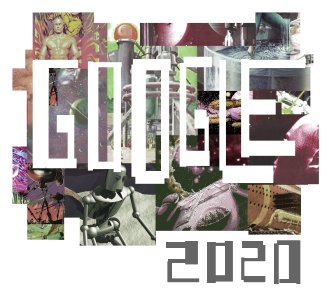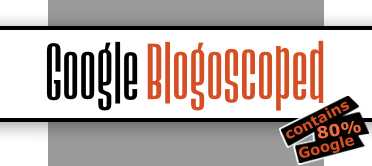Monday, November 29, 2004
Google Brain (Video)

In the year 2020, people won’t search the web anymore.
They will talk to it.
Watch the fully automated Google Brain [WMV] give instant replies.
MySQL 5
“Open source database vendor MySQL AB will release version 5.0 of its eponymous database management system in the first quarter of 2005 (...)
[MySQL 5.0] will include support for stored procedures, triggers, and views, making it more suitable for existing enterprise applications.”
–
MySQL prepares for version 5.0 (Computer Business Review), 29 Nov 2004 [Via Gadgetopia.]
Google Video Search?
In case you are looking for the new
Google Video Search, here’s the information.
“Google, Microsoft and Yahoo are quietly developing new search tools for digital video, foreshadowing a high-stakes technology arms race in the battle for control of consumers’ living rooms.
Google’s effort, until now secret, is arguably the most ambitious of the three. According to sources familiar with the plan, the search giant is courting broadcasters and cable networks with a new technology that would do for television what it has already done for the Internet: sort through and reveal needles of video clips from within the haystack archives of major network TV shows.
The effort comes on top of Google’s plans to create a multimedia search engine for Internet-only video that it will likely introduce next year, according to sources familiar with the company’s plans.”
– Stefanie Olsen, Striking up digital video search (CNet), November 29, 2004 [Via Battelle.]
Wikinews
Wikinews aims to successfully crossbreed Wikipedia* with up-to-date journalism, and the current results (like American teenage girl charged with murder of her own mother) already contain an impressive amount of detail. From the front-page: “Our mission is to create a world where citizen journalists report the news on a wide variety of current events."
*As you may know, a Wiki is a place where (usually) everbody can freely edit any page.
8-Ball
The next version of Flash, codenamed 8-Ball and currently in beta, will according to Mike Davidson include the following new features:
- Live bitmap filters such as drop shadows or glows
- A much faster rendering engine
- Improved anti-aliasing for text codenamed Saffron
- Fully alpha-maskable video with better compression
- And more
Google Collects Dead Links
Strangely enough Google indexes links even when the page they link to doesn’t exist. For example, their index reveals the following two URLs (my obfuscation):
- f*ck.microsoft.com
- f*ck.the.whitehouse.gov
And if you perform a site-search for www.example.com, you’ll find a whole variety of URLs people used as links. Some of these URLs return a 404 (file not found) status code; for others, the host cannot be found.
To further test this Googlebot “feature” I will add some non-existent links of my own:
- google.blogoscoped.was.here.whitehouse.gov
- google.blogoscoped.was.here.microsoft.com
- google.blogoscoped.was.here.ibm.com
- google.blogoscoped.was.here.sco.com
- google.blogoscoped.was.here.google.com
- google.blogoscoped.was.here.w3.org
Turn Off Image Toolbar
Do you know the Image Toolbar feature introduced in Internet Explorer 6? It's a slightly annoying rectangle popping up over images allowing the user to print or save them. If you are a web author who wants to turn this off for your visitors, you can include the following snippet in the "head" section of your HTML:
<meta http-equiv="imagetoolbar" content="no" />
SCO Homepage Defaced
Today the SCO Group server had been hacked, and a replaced image right on the front-page remained living proof.
Numbers
Worldometers displays all kind of different numbers (world population, deaths today, computers sold this year) based on statistical data. [Via Netbib at Feeeds.]
GDSPlus

The free Google Desktop Search Plus add-on makes it possible for Google Desktop to search files such as XML, WPD, SQL, or RTF.
Gmail 4444

Those still desperate for Gmail invites can refresh this Gmail Resource page until they draw the number 4444.
Feedster TV
Find “rich media feeds for your aggregator” at the new Feedster.tv. (Though depending on where I click I get error messages or bare directory views.)
eBay Pulse
At eBay Pulse you can find the most popular eBay search keywords, the largest stores, as well as the highest priced and most watched items. The current top 5 searches:
- cd
- dvd
- christmas
- gold
- ring
Office Games (German)
Herbert sent in these German office games.
>> More posts
Advertisement
This site unofficially covers Google™ and more with some rights reserved. Join our forum!

![[SCO Group Homepage]](/files/sco.jpg)